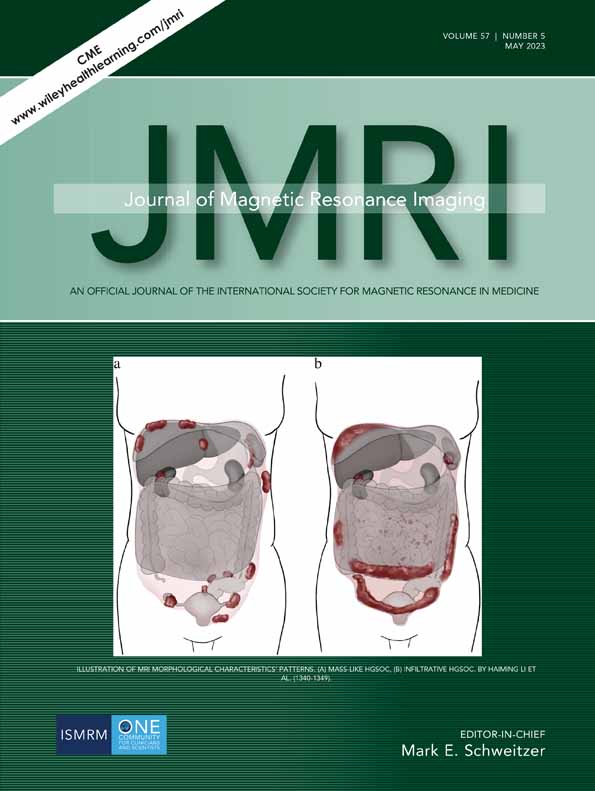Histogram Analysis Based on Neurite Orientation Dispersion and Density MR Imaging for Differentiation Between Glioblastoma Multiforme and Solitary Brain Metastasis and Comparison of the Diagnostic Performance of Two ROI Placements
Jinbo Qi and Peipei Wang contributed equally to this work.
Grant sponsor: This study was supported by a public service platform for artificial intelligence screening and auxiliary diagnosis for the medical and health industry, Ministry of Industry and Information Technology of the People's Republic of China (No. CEIEC-2020-ZM02-0103/03), and the Youth Project of Henan Medical Science and Technology Research Project (No. SBGJ202103078).
Abstract
Background
Preoperative differentiation of glioblastoma multiforme (GBM) and solitary brain metastasis (SBM) contributes to guide neurosurgical decision-making.
Purpose
To explore the value of histogram analysis based on neurite orientation dispersion and density imaging (NODDI) in differentiating between GBM and SBM and comparison of the diagnostic performance of two region of interest (ROI) placements.
Study Type
Retrospective.
Population
In all, 109 patients with GBM (n = 57) or SBM (n = 52) were enrolled.
Field Strength/Sequence
A 3.0 T scanners. T2-dark-fluid sequence, contrast-enhanced T1 magnetization-prepared rapid gradient echo sequence, and NODDI.
Assessment
ROIs were placed on the peritumoral edema area (ROI1) and whole tumor area (ROI2, included the cystic, necrotic, and hemorrhagic areas). Histogram parameters of each isotropic volume fraction (ISOVF), intracellular volume fraction (ICVF), and orientation dispersion index (ODI) from NODDI images for two ROIs were calculated, respectively.
Statistical Tests
Mann–Whitney U test, independent t-test, chi-square test, multivariate logistic regression analysis, DeLong's test.
Results
For the ROI1 and ROI2, the ICVFmin and ODImean obtained the highest area under curve (AUC, AUC = 0.741 and 0.750, respectively) compared to other single parameters, and the AUC of the multivariate logistic regression model was 0.851 and 0.942, respectively. DeLong's test revealed significant difference in diagnostic performance between optimal single parameter and multivariate logistic regression model within the same ROI, and the multivariate logistic regression models between two different ROIs.
Data Conclusion
The performance of multivariate logistic regression model is superior to optimal single parameter in both ROIs based on NODDI histogram analysis to distinguish SBM from GBM, and the ROI placed on the whole tumor area exhibited better diagnostic performance.
Evidence Level
4
Technical Efficacy
Stage 2




